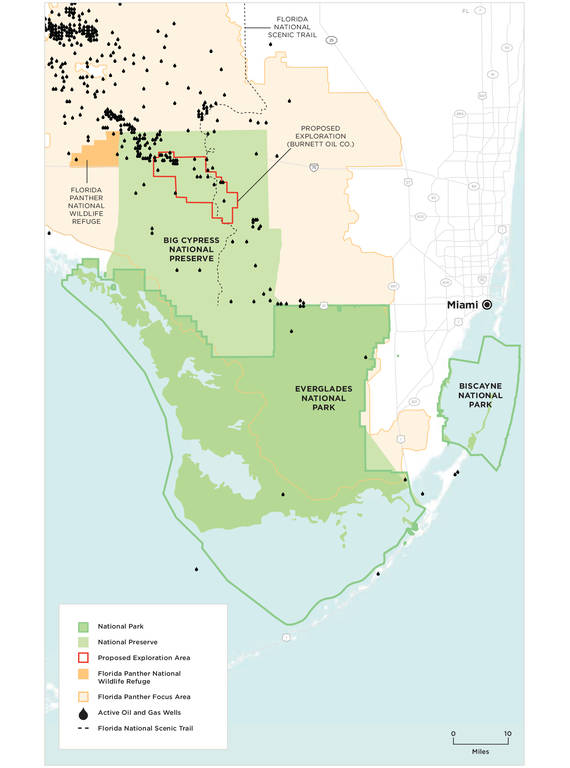Spoiled Parks
Big Cypress National Preserve

Background
Encompassing 729,000 acres, Big Cypress National Preserve is a fundamental component of the Greater Everglades Ecosystem that includes, to its south and east respectively, Everglades and Biscayne National Parks. The Greater Everglades ecosystem provides drinking water to one-third of Floridians, vital waterflows to valuable estuaries and fisheries, irrigation for much of the state’s agriculture and has been the focus of billion-dollar restoration efforts for decades. These public conservation efforts, and the critical habitat they protect, are now at risk for private gain.
Spoiling Park Resources

Development around Big Cypress National Preserve and Everglades National Park. (click map to enlarge) + Click to download (PDF)
The enabling legislation for Big Cypress National Preserve assures the preservation, conservation, and protection of the natural, scenic, hydrologic, floral and faunal, and recreational values of the Big Cypress Watershed. It also includes language allowing for limited oil exploration and development. While the National Park Service has broad authority to reject oil and gas activities in order to conserve this protected area, it has failed to do so resulting in damaging new oil and gas exploration that involves driving 33-ton “vibroseis” vehicles and other equipment throughout wetlands in the preserve.
Since 2017, these machines have left an unsightly 112-mile long swath of destruction more than 15 feet wide and up to 2 feet deep in places. Cypress trees, including dwarf cypress that may have been more than 350 years old, are cut down to make way for these heavy machines that compact sensitive wetlands and alter natural hydrological flows. This is only the first of four proposed exploration phases, which could ultimately encompass approximately 360 square miles, or one-third, of the Preserve—an area larger than many national parks, including Shenandoah, Crater Lake, Biscayne and Zion.
Of the 40+ National Park Service sites with at least some privately held mineral rights, there is no single project that comes close to the scope and scale of what is proposed for Big Cypress National Preserve. This new oil exploration in Big Cypress National Preserve is the single most damaging energy development project happening inside a national park site anywhere in the country.
Resources Threatened
-
 Wildlife and habitats critical to its survival
Wildlife and habitats critical to its survival -
 Natural resources, including wetlands and ancient trees
Natural resources, including wetlands and ancient trees -
 Outdoor recreation economy
Outdoor recreation economy
Make a tax-deductible gift today to provide a brighter future for our national parks and the millions of Americans who enjoy them.
Donate Now
